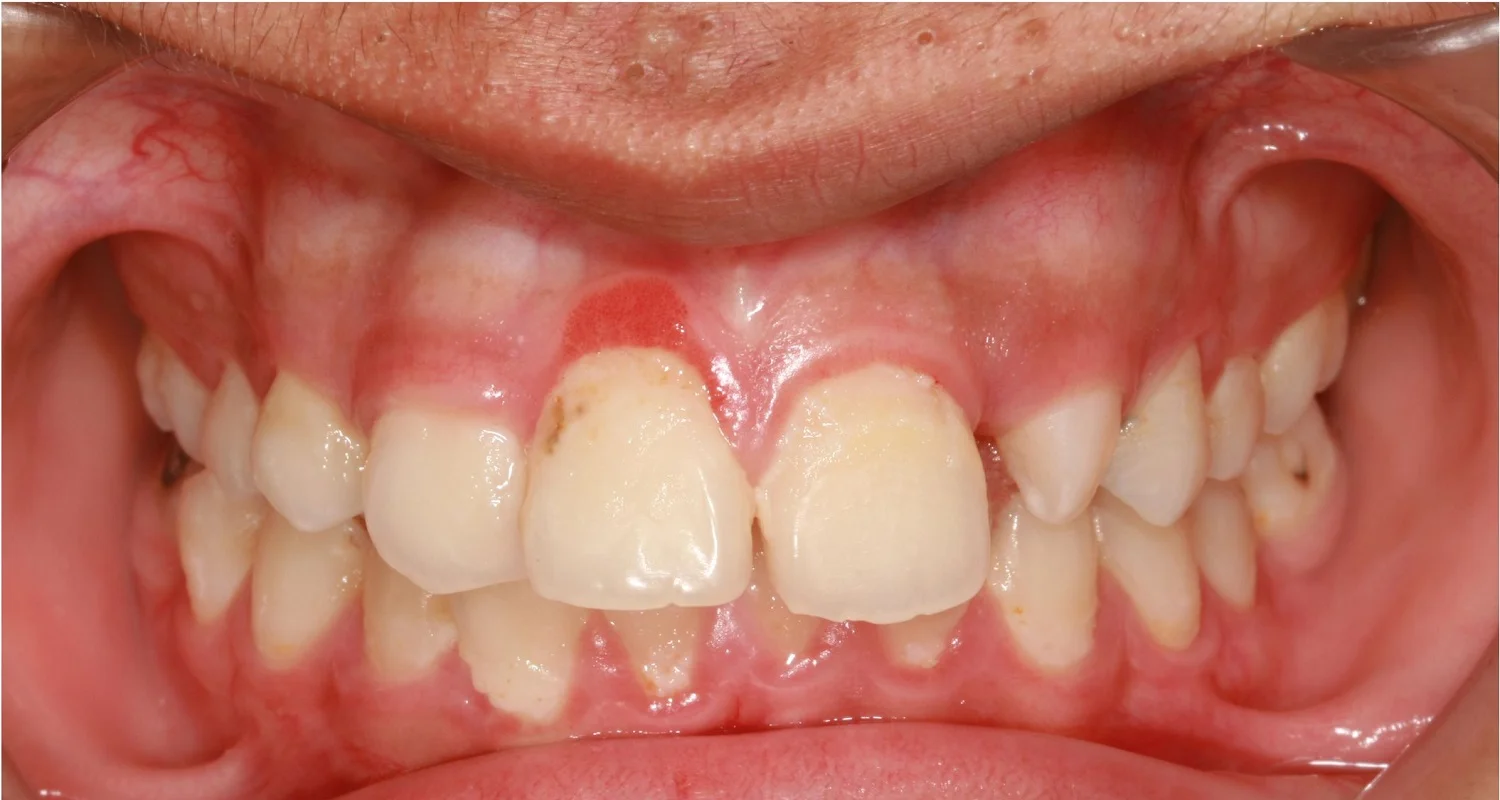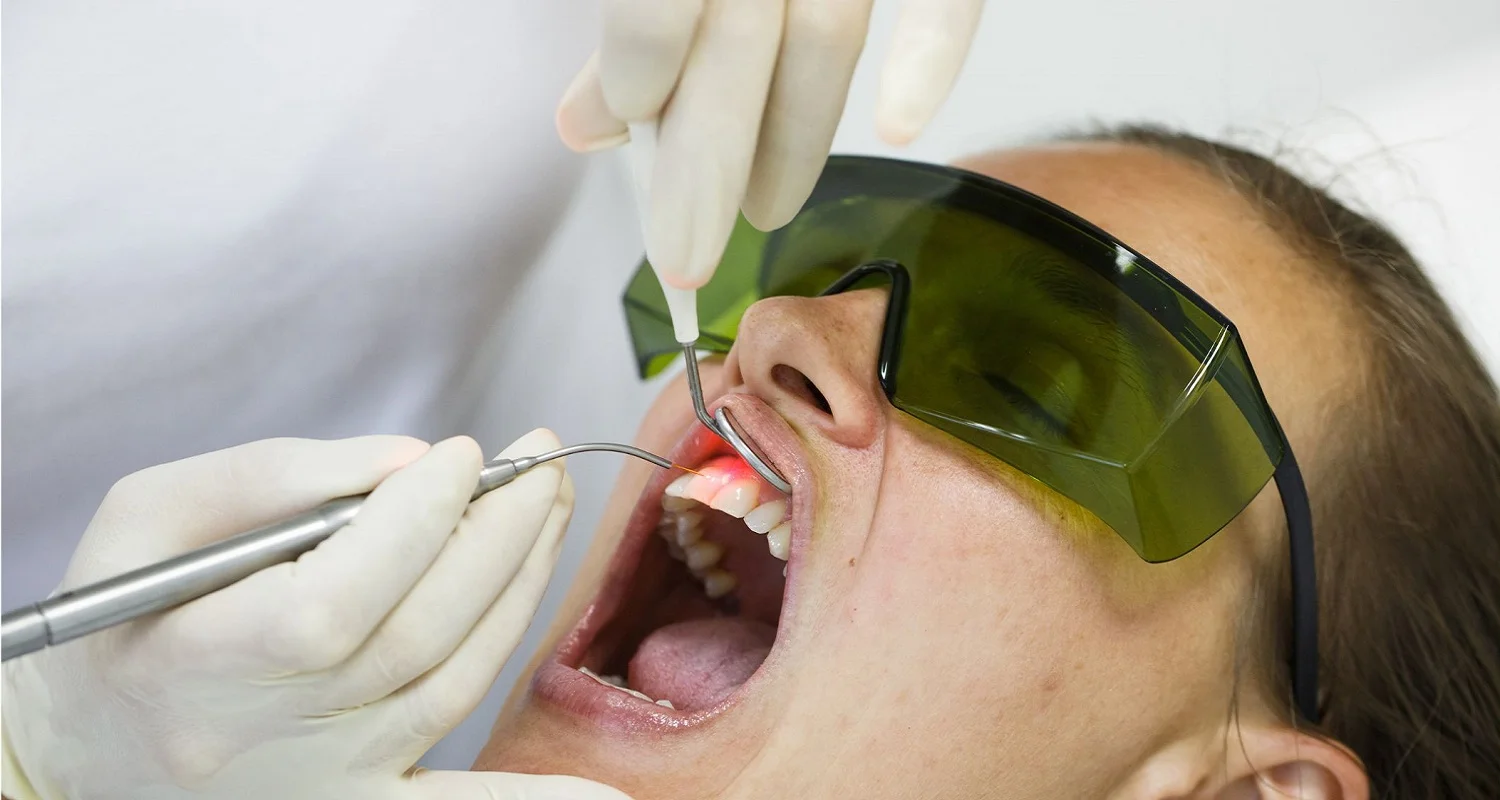Last Updated on: 2nd December 2025, 09:20 am
Global Context and Current Events
The World Health Organization has indicated that, in the last decade, oral diseases have increased in prevalence, affecting approximately 3.5 billion people. Advances in dental research and technology have led to better understanding and treatment, but prevention remains essential. This burden of disease can be costly and, in many countries, it is not covered by public healthcare.
Prevalence in the US
The situation in the United States is alarming. The National Institute of Dental and Craniofacial Research suggests that many adults suffer from gum disease. These diseases range from simple inflammations to serious conditions that can lead to tooth loss.
What is gum disease?
Gum disease, or periodontitis, refers to inflammation and an infection that affects the tissues that surround and support the teeth. This occurs when the bacteria in plaque (a sticky film that forms on teeth) produce substances that inflame and irritate the gums. If this situation persists, the gums can move away from the teeth, forming pockets full of bacteria that further infect the periodontal tissue.
Gingivitis and Periodontitis

Gum Diseases and General Health
Recent research has shown that gum disease may be linked to heart problems, diabetes, and even premature birth. Bacteria present in inflamed gums can enter the bloodstream, affecting other organs and systems. This bidirectional relationship implies on the one hand that having periodontal disease can increase the risk of suffering from other diseases while, on the other, certain systemic diseases can increase the likelihood of developing gum problems.
Risk Factors
Certain individuals are more likely to develop gum disease due to their habits, genetics, or medical conditions. These include smokers, people with high levels of stress, and those with a family history of gum disease.
Internal and external factors: From hormonal changes to medications, several factors can increase the risk of gum disease. Additionally, diseases that compromise the immune system, such as HIV or lupus, can increase susceptibility to oral infections.
Likewise, plaque accumulation is the main cause of gum disease, but there are other risk factors that cause it:
• Inadequate oral hygiene: Not brushing and flossing regularly increases your risk.
• Smoking: It is one of the main factors in the development of gum disease.
• Hormonal changes: Pregnancy, menstruation, puberty, and menopause can make gums more sensitive.
• Systemic diseases: Diabetes, heart disease, and cancer can increase the likelihood of gingival inflammation.
• Medicines: Some reduce salivary flow, decreasing natural protection against bacteria.
Habits and Diseases
People with diabetes, heart disease, or immune disorders are also at a high risk. Poor oral hygiene, lack of dental visits, and having crooked or misaligned teeth are other factors to consider. If you’re interested in learning about crooked teeth in babies, feel free to check out our article here.
Common Symptoms of Gum Disease
Identifying gum disease early is crucial for effective treatment. These are symptoms to consider:
- Red, swollen, or bleeding gums.
- Gingival recession, where the gums move away from the teeth.
- Loose teeth.
- Pus between teeth and gums.
- Pain when chewing.
- Tooth sensitivity.
Role of Plaque and Dental Hygiene
Dental plaque plays a central role in gum disease. This sticky, bacteria-filled layer builds up on your teeth and, if not removed, it can irritate your gums. Proper oral hygiene is, therefore, essential to prevent its formation and accumulation.
Treatment and Diagnosis of Gum Disease
1. Professional cleaning: In the early stages of the disease, professional dental cleaning may be sufficient. This procedure removes plaque and tartar from the tooth surface and below the gum line.
2. Scaling and root planing: This is a deeper procedure than conventional cleaning. The dentist scales and smoothes the roots of the teeth to remove bacteria and provide a clean surface for the gums to reattach.
3. Periodontal surgery: In advanced cases, surgery may be necessary to clean out pockets of infection and reshape damaged bone.
4. Medicine: oral medications can be prescribed to control the infection and reduce the size of periodontal pockets.
5. Laser therapy: A less invasive treatment that uses laser light to remove inflamed and damaged tissue.
Natural and Home Treatment
To relieve a gum infection, it’s fundamental to follow an unwritten rule that most are aware of: to preserve oral health, it’s essential to undergo at least two dental cleanings a year with a specialist. The accumulation of tartar and bacterial plaque is often the root of gingival infections, and this requires professional intervention.
Moreover, home and natural remedies are often highly effective and are even recommended by dentists. The daily use of these homemade treatments can provide significant and lasting relief.
1. Use of Mouthwashes
The primary purpose of mouthwashes is to fight against dental plaque, responsible for gingival diseases such as gingivitis and periodontitis, according to a study by the Complutense University of Madrid.
Therefore, one of the most effective home remedies to combat plaque is the use of mouthwash. Here’s how to prepare it.
Ingredients:
- 2 tablespoons of mouthwash (30 ml)
- 1 tablespoon of water (15 ml)
- Salt (optional)
Instructions:
- Mix a small amount of mouthwash with a few drops of water, ensuring that it’s not in equal proportion.
- To intensify the mixture, you can add a pinch of salt.
- Once the ingredients are combined, gargle with the mixture, ideally after each meal.
2. Lemon Juice
Lemon, thanks to its anti-inflammatory and antiseptic properties, can be effective in relieving gingivitis. Its acidity prevents the proliferation of bacteria and balances oral pH, also helping to combat bad breath.
Procedure:
- Squeeze the juice of half a lemon and mix it with a cup of warm water.
- Use this solution to rinse your mouth, avoiding swallowing.
- Perform this rinse twice a day, but limit its use to specific and not prolonged treatments, as lemon acid can damage dental enamel.
3. Chamomile Infusion
Chamomile is known for its anti-inflammatory, antiseptic, and analgesic properties, and it also promotes the healing of swollen gums by stimulating blood circulation and reducing swelling.
This herb also has a calming and disinfecting effect on inflamed gums. Prepare a chamomile infusion by letting it rest for 5 minutes and use it to rinse your mouth several times a day.
4. Coconut Oil Mouthwash (Oil Pulling Technique)
Coconut oil contains lauric acid, useful in fighting bacteria and pathogens. To combat or prevent gum inflammation:
- Take a teaspoon of coconut oil and allow it to dissolve in your mouth.
- Actively move the oil from one side of the mouth to the other, passing it between the teeth, for five to ten minutes. This ensures that it reaches all areas of the teeth.
This technique, known as “oil pulling,” is recommended to be done daily or, at a minimum, twice a week.
5. Aloe Vera Extract
Aloe vera is known for its anti-inflammatory, antibacterial properties, and its ability to soothe and heal, which is beneficial in treating gum infections, including gingivitis and periodontitis. It’s interesting to know that toothpastes with aloe vera are effective in inhibiting the growth of microorganisms in the mouth.
Ingredients:
- Two leaves of aloe vera.
- 150 ml of water.
- A teaspoon of honey (optional).
Instructions:
- Extract the pulp of aloe vera and blend it with the other ingredients. You can add more water to dilute the mixture if you prefer. Store the excess in the refrigerator.
- Use this juice as a mouthwash twice a day.
6. Watercress Rinse
Watercress, commonly used in salads, can be surprisingly effective in treating gingival infections. There are three ways to use it to alleviate this condition:
- As an extract for mouthwash or gargles.
- In the form of an infusion.
- By chewing the fresh leaves.
Ingredients:
- Watercress, blackberry, St. William’s herb, and small burnet.
- Half a liter of water.
Instructions:
- Combine about 5 g of each plant with the water and boil them for two minutes. Filter the mixture using gauze.
- Use this liquid as a mouthwash three times a day.
Gum Disease Prevention
1. Oral hygiene:
- Brushed: It is essential to brush your teeth at least twice a day using fluoride toothpaste.
- Using dental floss: It should be used daily to remove food debris and plaque between the teeth and under the gum line.
- Mouthwash: May help reduce plaque and bacteria.
- Regular dental visits: Visit the dentist at least twice a year for checkups and professional cleanings.
2. Balanced diet: Diet plays a fundamental role. Eat foods rich in vitamins and minerals and limit the consumption of sugars and fermentable carbohydrates. Excessive consumption of sugars and acidic foods can promote the appearance of bacterial plaque. On the other hand, a diet rich in vitamin C, calcium, antioxidants, and omega-3 can strengthen gums and help prevent periodontal disease.
3. Avoid tobacco: Smoking is a significant risk factor for the development of periodontitis.
4. Care during hormonal changes: Women, especially during pregnancy, menstruation, or menopause, should be aware of increased gum sensitivity and take preventive measures.
Education and Prevention:
Oral education from an early age is essential. Schools and communities are implementing educational programs to teach children the importance of oral hygiene. In addition, mass media awareness campaigns seek to reinforce the importance of regular dental visits and good habits in adults.
Conclusion
Contact Us
If you have any questions about dental conditions, you can contact us at Channel Islands Family Dental as well as our page on Facebook. We look forward to your visit and we will make a timely diagnosis. Our dentists in Oxnard, Santa Paula, Ventura, Newbury Park, and Port Hueneme will be able to guide you toward the best treatment to take care of your health and give you back your best smile.
Frequently Asked Questions (FAQ)
Bibliography
- World Health Organization. (2020). Oral health and well-being. Recovered from https://www.who.int/es/news-room/fact-sheets/detail/oral-health
- National Institute of Dental and Craniofacial Research, NIH (Mar, 2023). Periodontal (Gum) Disease. National Institute of Health. https://www.nidcr.nih.gov/health-info/gum-disease
- Better Health Channel. (May, 2022). Gum Disease.Department of Health, State Government of Victoria, Australia. https://www.betterhealth.vic.gov.au/health/conditionsandtreatments/gum-disease
- International Dental Association. (2019). Relationship between periodontal disease and systemic health. Recovered from https://www.fdiworlddental.org/
- Johns Hopkins Medicine Health. Periodontal Diseases (s/f). The Johns Hopkins University, The Johns Hopkins Hospital, and Johns Hopkins Health System. https://www.hopkinsmedicine.org/health/conditions-and-diseases/periodontal-diseases
- Journal of Clinical Periodontology. (2018). Advances in the diagnosis of periodontal diseases. Recovered from https://onlinelibrary.wiley.com/journal/1600051x
- Spanish Nutrition Society. (2021). Nutrition and oral health. Recovered from https://www.sennutricion.org/
- European Dental Foundation. (2019). Education and prevention in oral health. Recovered from https://www.eudental.eu/
- National Dental Research Institute. (2020). Symptoms and treatment of gum disease. Recovered from https://www.nidcr.nih.gov/
- Cleveland Clinic medical. (Oct 04, 2023). Periodontal Disease (Gum Disease). https://my.clevelandclinic.org/health/diseases/21482-gum-periodontal-disease
- National Health Service, NHS inform (May, 2023). Gum disease. https://www.nhsinform.scot/illnesses-and-conditions/mouth/gum-disease
- Evan Frisbee, DMD. (July 30, 2021). WebMD, LLC. Gingivitis and Periodontal Disease. https://www.webmd.com/oral-health/gingivitis-periodontal-disease
























